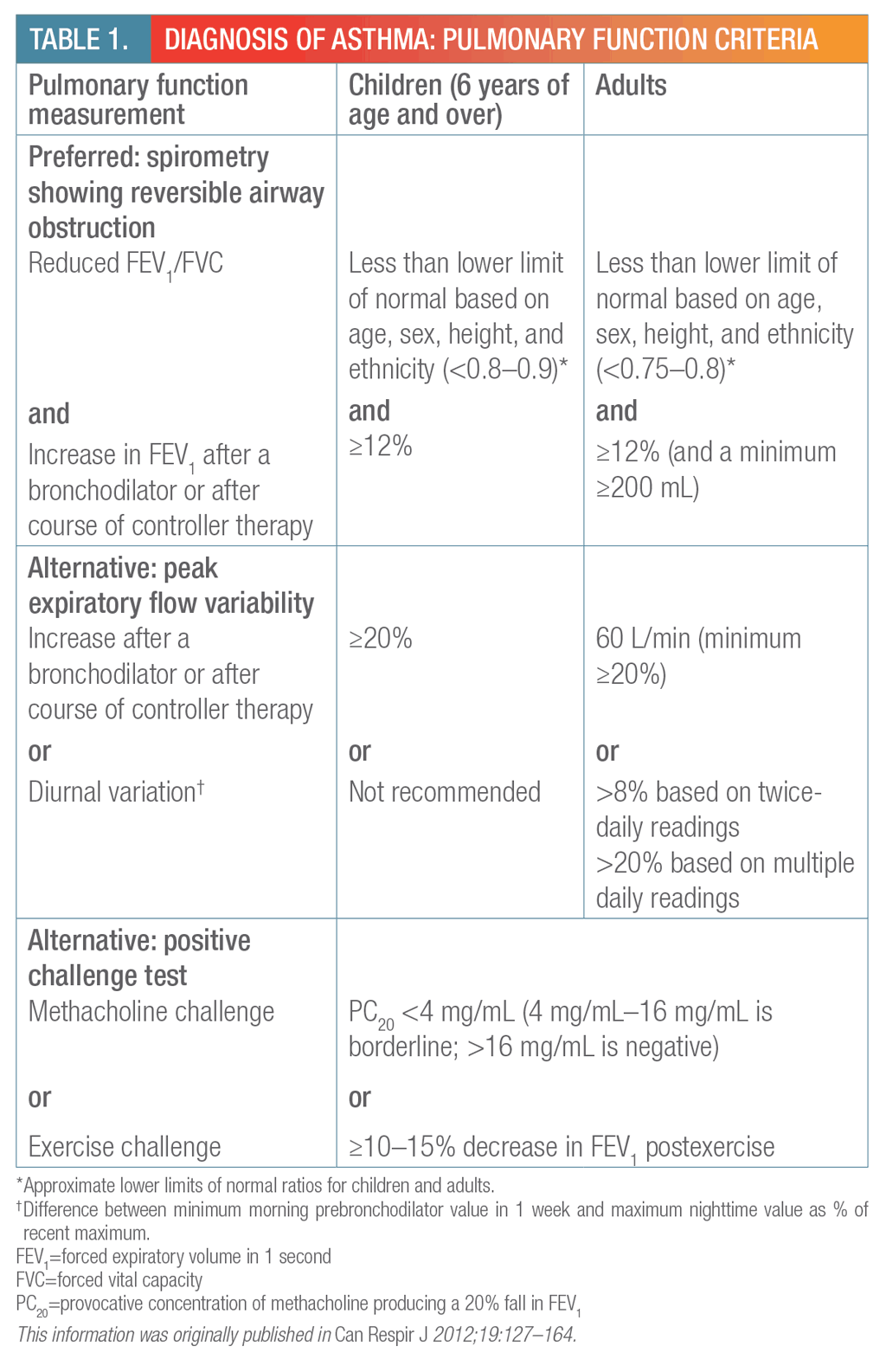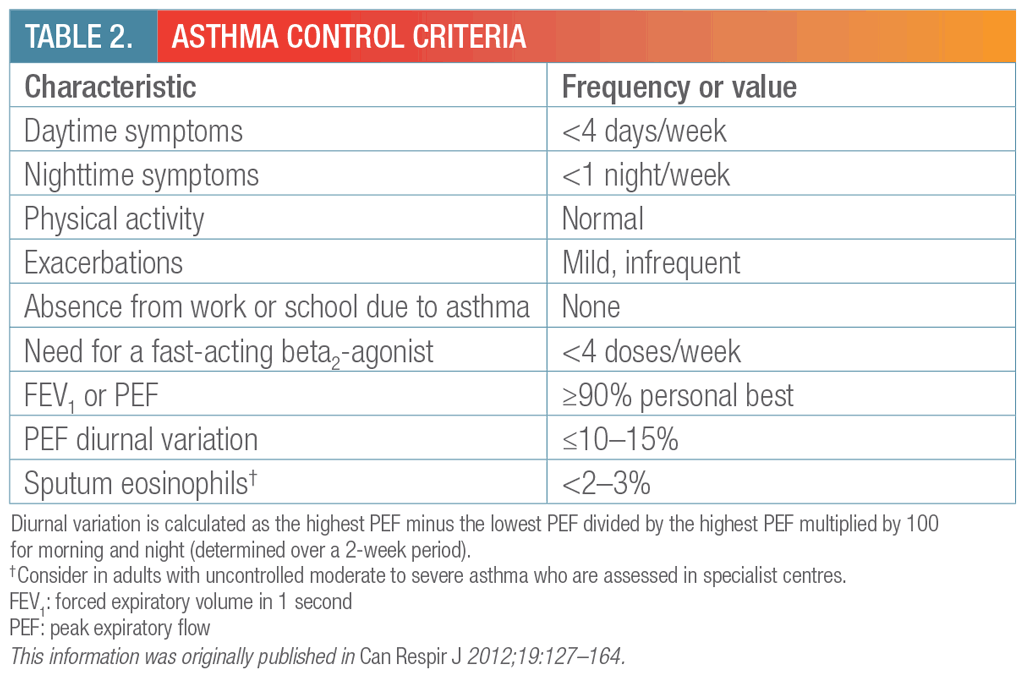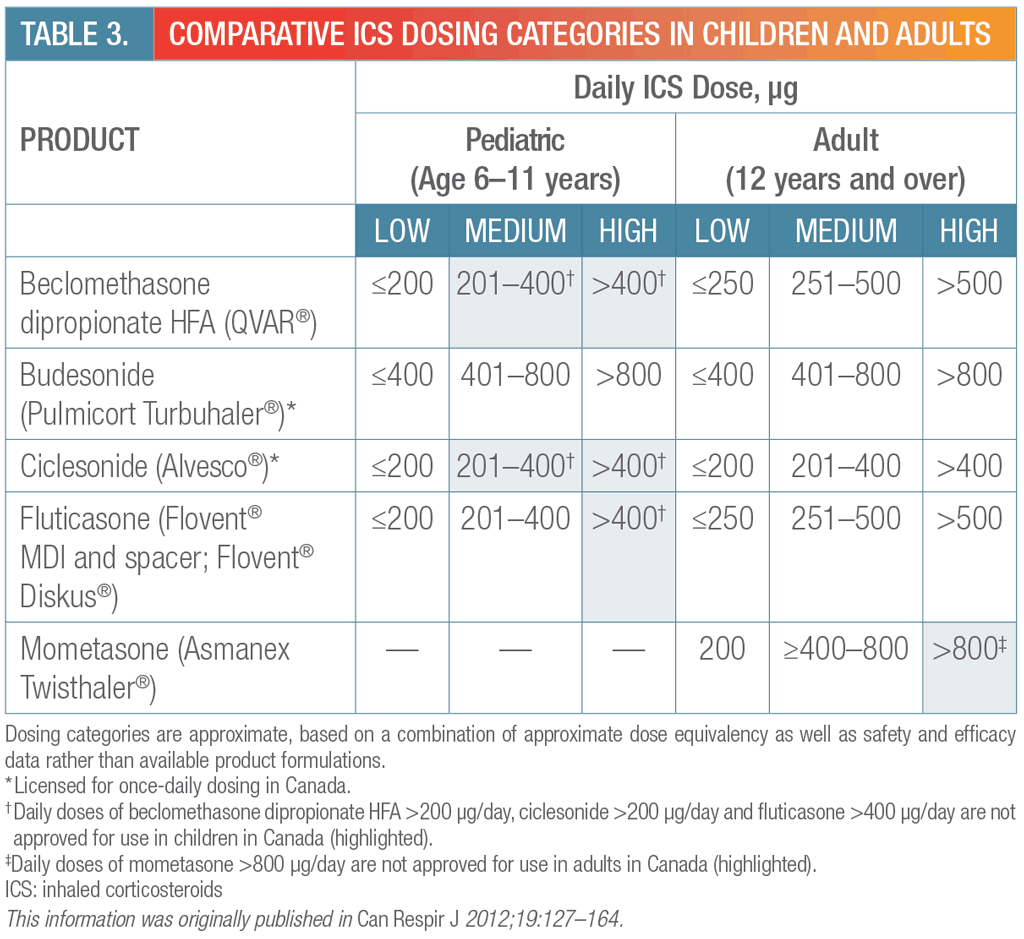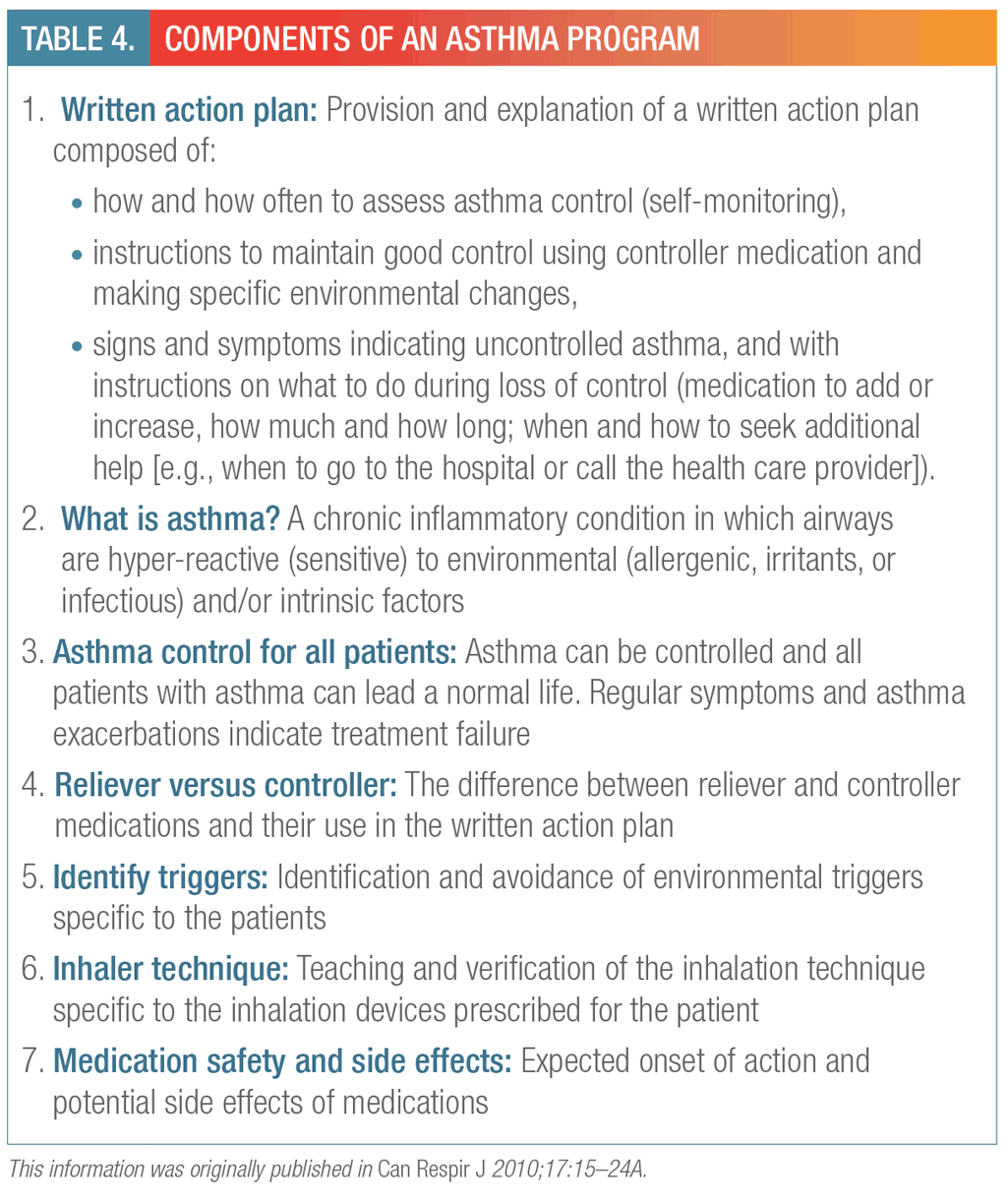ASTHMA
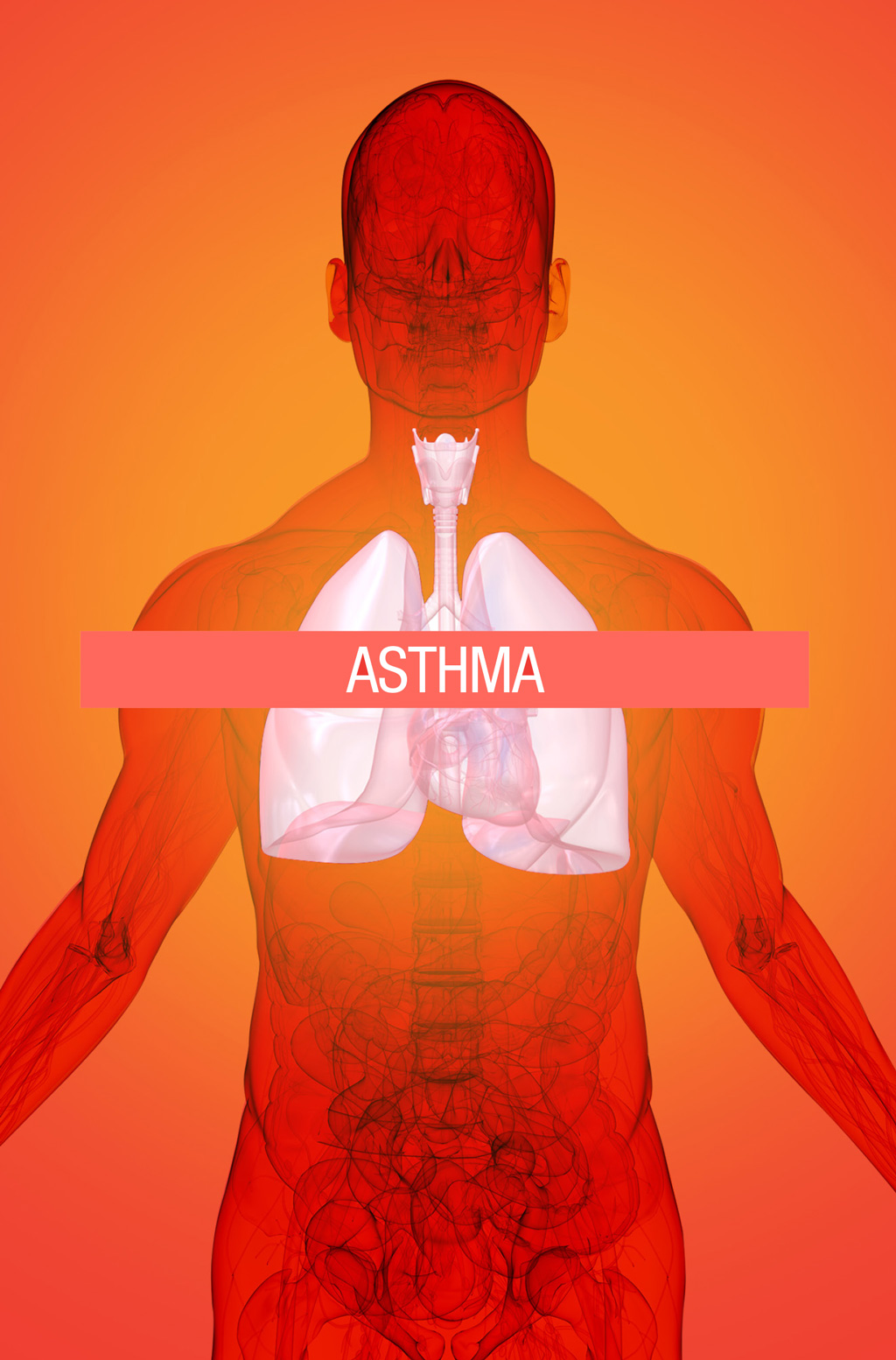
Management of Adult Asthma
Management of Adult Asthma
Adapted from: Lougheed MD, Lemiere C, Ducharme FM, et al. Canadian Thoracic Society 2012 guideline update: diagnosis and management of asthma in preschoolers, children and adults. Can Respir J 2012;19:127-164.
OVERVIEW
The Canadian Thoracic Society (CTS) published a consensus summary for the diagnosis and management of asthma in 2010. Following that, the CTS Asthma Clinical Assembly began a formal clinical practice guideline update process. The first iteration of these updates, published in 2012, focuses on controversial topics and/ or gaps in the 2010 guidelines. The information here represents a combination of updated recommendations from the 2012 guidelines, along with some unchanged information carried over from the 2010 guidelines, where relevant.
KEY POINTS
KEY POINTS
- Clinical suspicion of asthma should be confirmed with objective measures of pulmonary function to confirm the presence of reversible airway obstruction.
- The revised continuum diagram reflects the importance of confirming diagnosis with objective assessment of lung function; regular reassessment of lung function to monitor asthma control; and the differences in management for children and adults.
- Self-management education is an essential component of asthma management and should be offered to all patients.
- Controller therapy should be initiated in children and adults with one or more indicators of poor control.
Diagnosis
Diagnosis
Symptoms of asthma include frequent episodes of breathlessness, chest tightness, wheezing, or cough; they are often worse at night and early in the morning. An asthma diagnosis should be considered in all patients with recurrent symptoms and signs of variable airway obstruction. Symptoms often develop as a result of a trigger (e.g., infection, exercise, allergens/irritants) and improve in response to bronchodilator or anti-inflammatory therapy.
Clinical suspicion of asthma should be confirmed with objective measures of pulmonary function showing reversible airway obstruction following administration of a bronchodilator. Table 1 outlines the pulmonary function criteria for a diagnosis of asthma using the preferred method of spirometry, as well as alternative methods (e.g., peak expiratory flow, challenge tests).
2012 Asthma Management Continuum
2012 Asthma Management Continuum
The revised continuum diagram reflects the importance of confirming diagnosis with objective assessment of lung function; regular reassessment of lung function to monitor asthma control; and differences in management for children and adults (Figure 1).
Figure 1.
FIGURE 1. ASTHMA MANAGEMENT CONTINUUM
Management hinges on confirming the diagnosis. All individuals with confirmed asthma should receive self-management education, including a written action plan. Very mild intermittent asthma may be treated with a short-acting beta2-agonist (SABA) taken as needed. SABAs are recommended for relief of symptoms; individuals 12 years of age and over with moderate to severe asthma (particularly those who are exacerbation-prone and have poor control) who are taking an ICS/ LABA formulation approved also for use as a reliever may do so. Inhaled corticosteroids (ICS) should be introduced early as the initial maintenance treatment for asthma, even in individuals who report asthma symptoms less than three times a week. LTRAs are second-line monotherapy for mild asthma. If asthma is not adequately controlled by low doses of ICS, additional therapy should be considered. In children 6 years of age and over, the ICS should be increased to a medium dose before adding an adjunct agent such as a long-acting beta2-agonist (LABA) or LTRA. In children 12 years of age and over, and adults, a LABA should be considered first as adjunct therapy. A LABA should only be used in combination with an ICS. Increasing to a medium dose of ICS or the addition of an LTRA are third-line therapeutic options. Theophylline may be considered as a fourth-line agent in adults. Severely uncontrolled asthma may require additional treatment with prednisone. Omalizumab may be considered in individuals 12 years of age and over with atopic asthma poorly controlled despite high doses of ICS and appropriate add-on therapy, with or without prednisone. Asthma symptom control and lung function tests, inhaler technique, adherence to asthma treatment, exposure to asthma triggers in the environment, and the presence of co-morbidities should be reassessed at each visit and before altering the maintenance therapy. Consider also assessment of sputum eosinophils in adults with uncontrolled moderate to severe asthma managed in specialized centres. After achieving proper asthma control for at least a few weeks to months, the medication should be reduced to the minimum necessary to achieve adequate asthma control and prevent future risk of exacerbations.
HFA: hydrofluoroalkane
ICS: inhaled corticosteroids
IgE: immunoglobulin E
LABA: long-acting beta2-agonist
LTRA: leukotriene receptor antagonist
PEF: peak expiratory flow
This information was originally published in Can Respir J 2012;19:127–164.
Asthma Control
Asthma Control
The primary goal of asthma management is to minimize the risk of short- and longterm complications, morbidity and mortality, by controlling the disease. Regular need for reliever medication indicates suboptimal control. An acute-care visit should be considered a management failure and lead to a review of the management plan.
Environmental Control
Environmental Control
It is important to identify environmental triggers by completing a thorough medical and occupational history and performing appropriate investigations. Avoidance of irritant and allergic triggers at home, school, and work are important secondary prevention measures. Smoking cessation should be encouraged at every clinical visit. Efforts to reduce exposure of patients with asthma to air pollutants should also be continued.
Self-Management Asthma Education/Written Action Plan
Self-Management Asthma Education/Written Action Plan
Self-management education is essential to asthma management. Key components of an educational program are outlined in Table 4.
Combined with self-management education, written action plans have been shown to be highly effective therapeutic tools. A number of preformatted written plans are available in Canada.
PHARMACOTHERAPY
PHARMACOTHERAPY
Reliever therapy
Reliever therapy
All patients should have access to a fast-acting bronchodilator to treat acute symptoms as needed:
- Short-acting beta2-agonists (e.g., salbutamol, terbutaline, fenoterol)
- Long-acting beta2-agonist (formoterol) — should be used only in patients on regular inhaled corticosteroid therapy in adults and children >12 years of age
Controller therapy
Controller therapy
Controller therapy should be initiated in children and adults with one or more indicators of poor control (see Table 2). The chosen therapy should take current control and future risk for exacerbations into account (Figure 1).
REGULAR REASSESSMENT
REGULAR REASSESSMENT
Asthma control should be reassessed on a regular basis and should include the following:
- Spirometry or peak expiratory flow to assess lung function
- Identification/avoidance of triggers such as allergens, occupational sensitizers, respiratory infections, exercise, etc.
- Inhaler technique
- Adherence to asthma medications
- Comorbidities (e.g., rhinitis, sinusitis, gastroesophageal reflux disease)
Key Differences in Asthma Management for Children
Key Differences in Asthma Management for Children
There are a number of differences in the management and monitoring of children
with asthma, including the following:
- Medications:
- High doses of ICS may be associated with significant side effects in children.
- Children aged 6–11 who are not adequately controlled with a low dose of inhaled corticosteroids should be started on a moderate dose.
- The preferred second-line therapy in children whose asthma is not adequately controlled with a moderate dose of inhaled corticosteroids is the addition of a long-acting beta2-agonist or a leukotriene receptor antagonist.
- Use of single-inhaler combination formoterol/budesonide is not approved for children under age 12 years.
- Choice of inhalation device varies with age.
- Monitoring:
- Growth in children should be carefully monitored; a fall-off in growth should prompt referral to a specialist.
- In young children, ask about playtime when asking questions about exerciseinduced asthma.
- Parents should be involved in self-management education for very young children; the focus of education should shift to the child as he/she approaches adolescence.
CONCLUSION
CONCLUSION
The foundation of asthma management is establishing an accurate diagnosis based on objective measures (e.g., spirometry). Measures to help the individual attain optimal control include pharmacotherapy, avoidance of triggers, and selfmanagement education/written education plans. These guidelines provide updated recommendations based on new research since the publication of the 2010 consensus summary.
Full Guidelines
Full Guidelines
The preceding material represents a summary of the Canadian Thoracic Society 2012 guideline update. Clinicians are encouraged to consult the complete document (see Lougheed MD, Lemière C, Ducharme FM, et al. Canadian Thoracic Society 2012 guideline update: diagnosis and management of asthma in preschoolers, children and adults. Can Respir J 2012;19:127–164).
As well, clinicians are encouraged to consult the Canadian Thoracic Society 2010 consensus summary (see Lougheed MD, Lemière C, Dell SD, et al. Canadian Thoracic Society Asthma Management Continuum — 2010 consensus summary for children six years of age and over, and adults. Can Respir J 2010;17:15–24A).
Additional Guidelines
Additional Guidelines
Updated international guidelines on the prevention and management of asthma are also available. See Global Initiative for Asthma (GINA). Global Strategy for Asthma Management and Prevention. Updated 2011. Available at: www.ginasthma.org. Accessed September 30, 2012.
